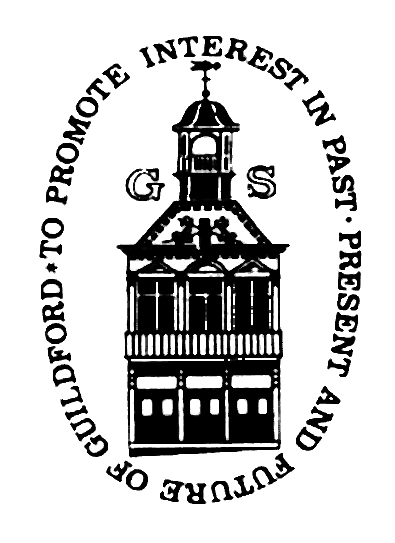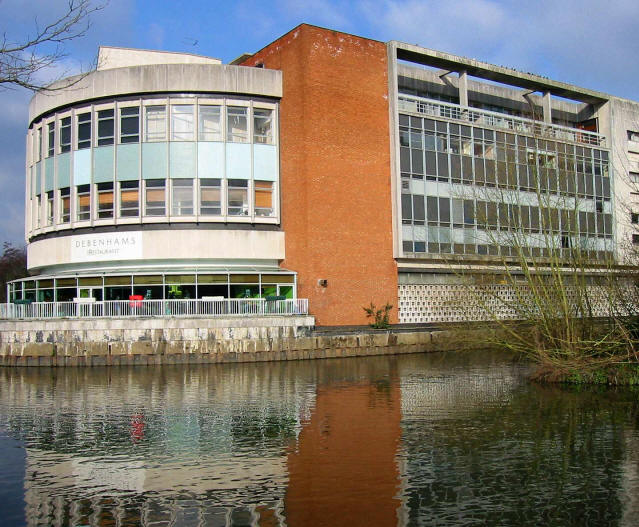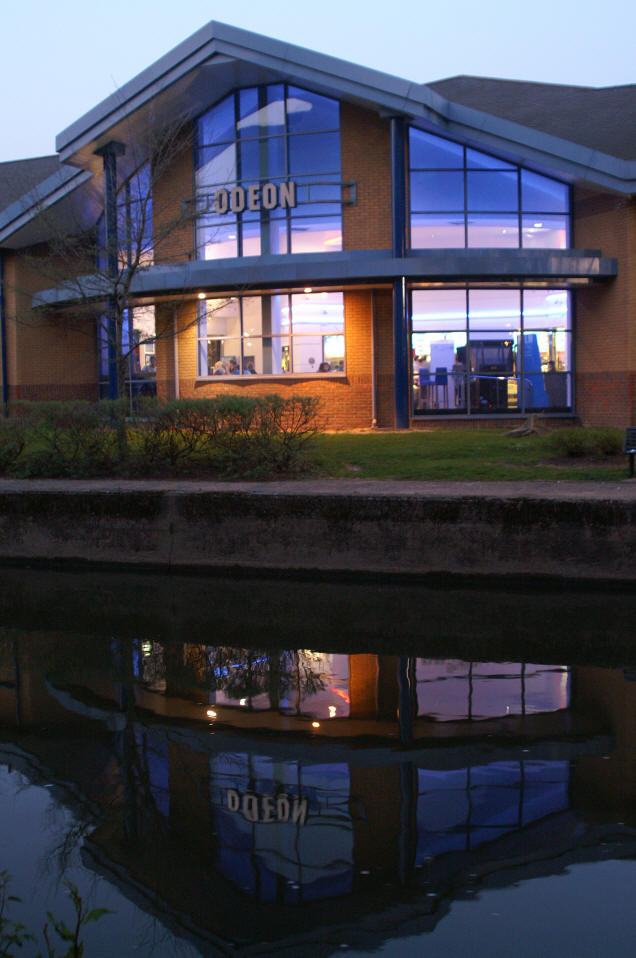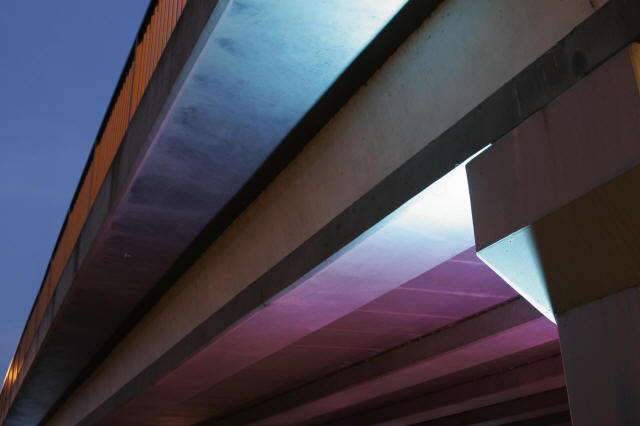

As the
twentieth century dawned few public buildings in the town had a direct
association with the river, the majority of the buildings along the
river being connected to industry and transport. Onslow House was one of
the few exceptions, with its distinctive conical tower acting as a
gateway into the town from Onslow Bridge.
The decision in 1900, to replace the old medieval Town Bridge with a new
single span iron bridge, would be the first of many planning decisions
in the twentieth century that would destroy large parts of the town’s
river heritage.
After the Second World War, increasing use of road transport meant that
it was necessary to build a new gyratory road system centered on the
river at the bottom of the High Street and North Street. This
development which begun in the early 1960's, whilst helping to relieve
traffic congestion, also had the effect of destroying much of the
intricate web of historic domestic and commercial buildings that had
grown up along the river. In addition it acted as a barrier between the
town and the river.


